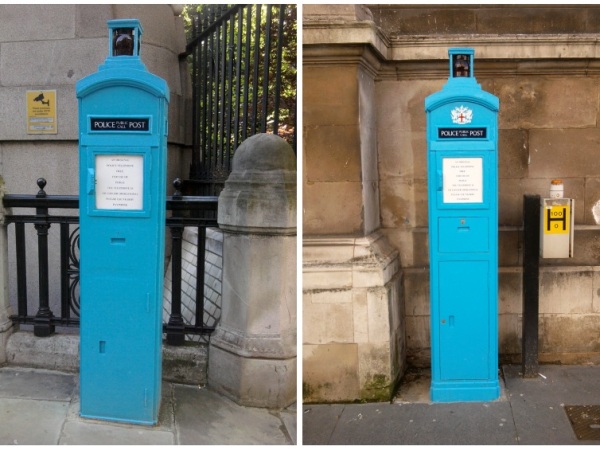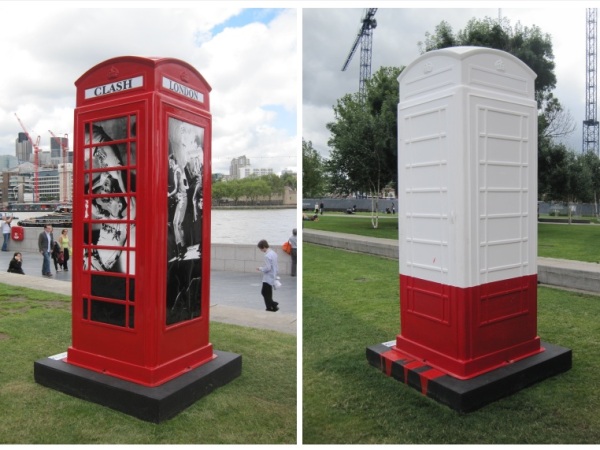A look at London’s post boxes from Queen Victoria to Queen Elizabeth II
The history of the Royal Mail’s post boxes and how you can tell each one’s age (roughly!).
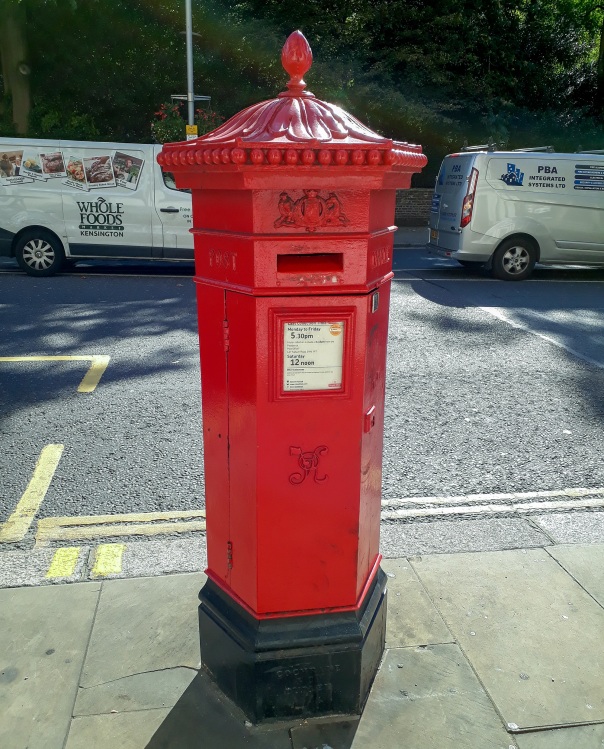
A Victorian post box in Kensington
The red post box is an iconic piece of British heritage, having been a familiar piece of the streets for nearly 180 years. Despite the public’s fondness of the post box, it isn’t in such demand as it used to be due to the rapidly changing world. The rise of electronic communication and the introduction of rival delivery companies to Royal Mail means the post box isn’t used so widespread as in previous years. A Royal Mail post box is said stand half a mile from over 98% of the UK population. There are around 155,500 post boxes across the UK, with a substantial portion of these situated in London.
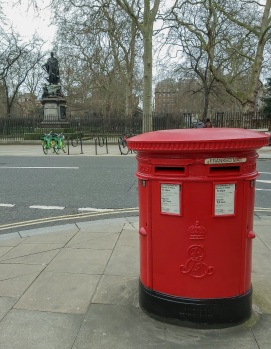
Edward VII era post box in Russell Square
Of the thousands of post boxes in the capital, some of them are listed. In 2002, the Royal Mail entered into agreements with Historic England, Scotland, Wales and Northern Ireland respectively to retain and conserve all existing post boxes.
When it comes to post boxes, there are two main factors which distinguish them from each other – their design and the royal cypher (or cipher). The roadside post box has existed since the reign of Queen Victoria, with every subsequent monarch’s cypher being immortalised on the front. By looking at the cypher, you can date the age of your nearest post box, although admittedly the ballpark for boxes erected during the reigns of Victoria and our previous monarch Elizabeth II are rather large! Of course, the shortest reign in recent memory is that of King Edward VIII. The eldest son of King George V only reigned for 326 days, before he abdicated the throne to marry American divorcee Wallis Simpson in 1936. Despite his short time as head of state, there are 171 boxes with his cypher nationally, some of which are in London.
Ciphers of British monarchs and their reigns
VR – Queen Victoria : 1837-1901
ER VII – King Edward VII : 1901-1910
GR – King George V : 1910-1936
ER VIII – King Edward VIII : Jan-Dec 1936
GR VI – King George VI : 1936-1952
EIIR – Queen Elizabeth II : 1952-2022
CIIIR – King Charles III : 2022-present.
Walking around London today, a red post box is a frequent piece of street furniture. While the majority are round or oval, there are also hexagonal, wall boxes and other unusual sizes. Most free-standing post boxes feature a cap, which protects rainwater from entering the box and wetting the mail.
Prior to postal reform in 1840, mail was an expensive form of communication. The Uniform Penny Post was introduced, meaning the sender pre-paid the postal costs, rather than the recipient. The same year, the Penny Black adhesive stamp was released. It wasn’t until 12 years later, the first roadside Post Office pillar box was erected in St Helier, Jersey as a trial. In 1853, the first roadside pillar box was established in the mainland United Kingdom in Carlisle. In 1856, Richard Redgrave (1804-1888) from the Department of Science and Art came up with an ornate pillar box design to be used in London and other cities. Today, you can see one of Redgrave’s designs – which were bronze – at the Victoria & Albert Museum. From 1857, some post boxes were built into existing walls.
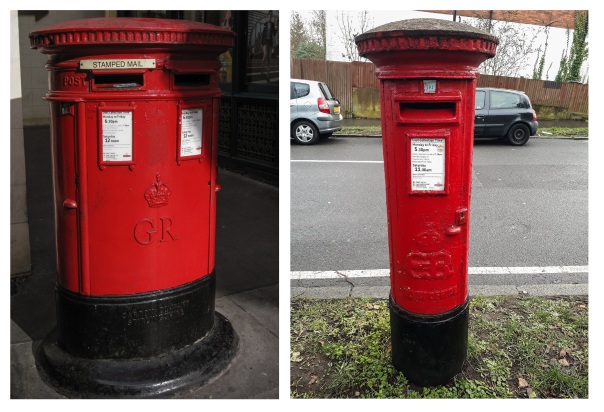
A George V era box (left) and a rare Edward VIII box (right)
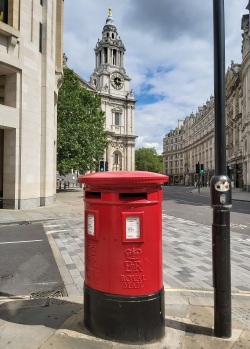
A Queen Elizabeth II era post box on Ludgate Hill
In 1859, the Post Office realised the wide variety of designs were expensive to produce so rolled out a new standardised design. However, the design didn’t prove popular, and the District Surveyor for Liverpool commissioned his own, non-standard box, known today as ‘the Liverpool Special’. The Post Office tried to establish a new standard design again with John Wornham Penfold’s (1828-1909) hexagonal box with acanthus leaves on its cap between 1866-1879. Although green was the standard colour at first, boxes began being painted red in July 1874, a process which took 10 years. In 1879, the box changed again with the new standard resembling the ones you see today. The box is cylindrical with a protruding cap with front opening door and black painted base. Original post boxes didn’t have the royal cipher until 1887, when the words ‘Post Office’ were also added.
Some square boxes were introduced in the second half of the 20th century, although aren’t so popular with the public and visitor as the iconic cylindrical ones. Walking around London (or indeed the UK) today, you can always be guaranteed to see a post box on the streets. In total, over 60% of current British post boxes feature Queen Elizabeth II‘s cipher or a Scottish crown. The second most popular cipher is from the reign of George V with 15% of the total. Next time you see a post box, why not check out its cypher and figure out how old it is?
Will post boxes change following Queen Elizabeth II’s death?
Following past post box tradition, current post boxes will not have their existing ciphers changed to the new monarch, King Charles III, following the death of his mother, Queen Elizabeth II on 8 September 2022.
The Royal Mail confirmed on 27 September 2022 that existing post boxes will remain unchanged, however boxes currently in production or being prepared for installation will retain the late Queen’s insignia, but will feature King Charles III’s cypher. New post boxes aren’t so common additions to the UK’s street furniture these days, but usually appear in new roads and housing estates.
However, you will start to see King Charles’ cipher appearing on Royal Mail stamps in the near future, as well as passports, government signage, uniforms and medals.
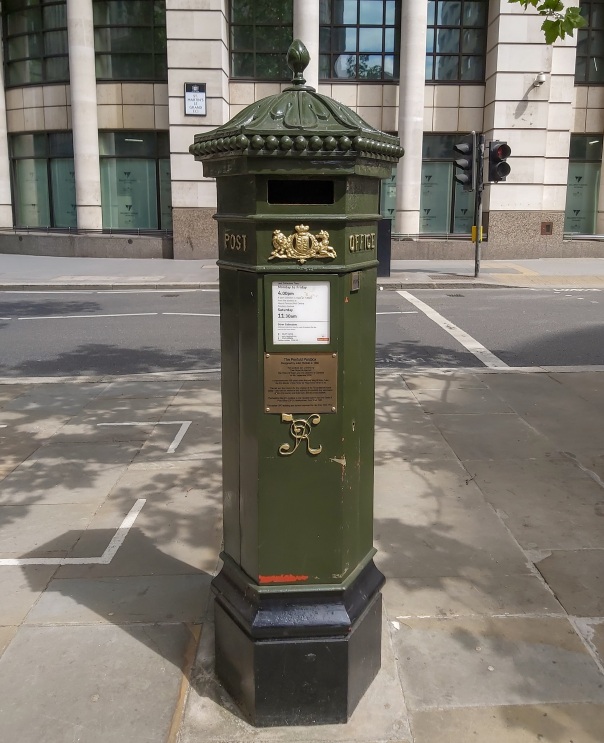
A replica Penfold post box on St Martin le Grand in the City of London
NB: This article was updated in September 2022 following the death of Her Majesty, Queen Elizabeth II to reflect the succession of King Charles III.
Follow Metro Girl on Instagram for more photos of hidden London.
For more London history and architecture posts, click here.
Posted on 21 Jul 2019, in Architecture, History, London, Tourist Attractions and tagged street furniture. Bookmark the permalink. Comments Off on A look at London’s post boxes from Queen Victoria to Queen Elizabeth II.

